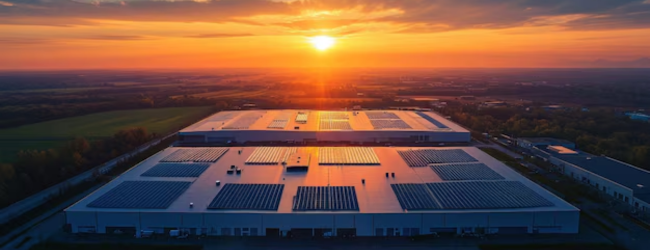Table of contents
- Why Start a Solar Product Manufacturing Business in 2025?
- Detailed Breakdown of Startup Costs (Example for a Medium-Scale Solar Panel Manufacturing Unit)
- Step 1: In-Depth Market Research and Niche Selection (Month 1)
- Step 2: Business Plan Development (Month 2)
- Step 3: Legal and Regulatory Compliance (Month 3)
- Step 4: Securing Funding (Month 4)
- Step 5: Facility Setup and Equipment Procurement (Month 5)
- Step 6: Raw Material Sourcing and Supply Chain Establishment (Month 6)
- Step 7: Manufacturing and Quality Control (Months 7-9)
- Step 8: Marketing and Sales Strategy (Months 10-11)
- Step 9: Launch and Initial Sales (Month 12)
- Step 10: Scaling and Expansion (Year 2+)
- Need Expert Guidance?
- Conclusion
- Frequently Asked Questions (FAQs)
India’s renewable energy sector is booming, driven by ambitious government initiatives and a growing awareness of environmental sustainability. This makes starting a “solar product manufacturing business” a promising venture. With abundant sunlight and increasing demand for clean energy, the market is ripe for innovation and growth. This article will guide you through the essential steps, from market research to scaling up your operations, ensuring you’re well-equipped to shine in the solar industry.
Why Start a Solar Product Manufacturing Business in 2025?

- Government Push and Policy Support:
- India’s ambitious renewable energy targets, including achieving 500 GW of non-fossil fuel capacity by 2030, are backed by strong government policies.
- The Production Linked Incentive (PLI) scheme for solar module manufacturing provides significant financial incentives, reducing manufacturing costs and enhancing competitiveness.
- Why 2025? Policies become more mature, and the government’s commitment more concrete.
- Declining Manufacturing Costs:
- Advances in solar technology and economies of scale have led to a steady decline in manufacturing costs.
- This makes solar products more affordable, driving demand and creating a larger market for manufacturers.
- Why 2025? Supply chains will be more efficient, and manufacturing processes will be further optimized.
- Growing Consumer Awareness and Demand:
- Increased awareness of environmental sustainability and rising electricity costs are driving consumer demand for solar products.
- The adoption of solar water heaters, rooftop solar systems, and solar-powered appliances is rapidly increasing.
- Why 2025? As climate change impacts become more apparent, consumer adoption will accelerate.
- Technological Advancements:
- Innovations in solar cell technology, energy storage, and smart grid systems are creating new opportunities for product development.
- Manufacturing businesses that embrace these technologies can gain a competitive edge.
- Why 2025? Technological maturity will be higher, allowing for more reliable and efficient products.
- Export Potential:
- India is emerging as a major player in the global solar market, with significant export potential.
- Manufacturing businesses that meet international quality standards can tap into this lucrative market.
- Why 2025? India’s reputation as a reliable manufacturer will solidify.
Detailed Breakdown of Startup Costs (Example for a Medium-Scale Solar Panel Manufacturing Unit)

- Land and Building:
- Land acquisition/lease: ₹50 lakhs – ₹1 crore (depending on location and size)
- Construction/renovation of manufacturing facility: ₹30 lakhs – ₹50 lakhs
- Machinery and Equipment:
- Solar cell cutting and assembly machines: ₹1 crore – ₹2 crore
- Lamination and framing machines: ₹50 lakhs – ₹1 crore
- Testing and quality control equipment: ₹20 lakhs – ₹40 lakhs
- Tools and general equipment: ₹ 10 Lakhs- ₹20 Lakhs.
- Raw Materials Inventory:
- Silicon wafers, glass, frames, junction boxes, etc.: ₹50 lakhs – ₹1 crore (initial stock)
- Licenses and Certifications:
- Business registration, GST, BIS, environmental clearances: ₹5 lakhs – ₹10 lakhs
- Working Capital:
- Salaries, utilities, marketing, and other operational expenses: ₹30 lakhs – ₹50 lakhs (for the first 6-12 months)
- Professional Fees:
- Legal, accounting, and consulting fees: ₹5 Lakhs – ₹10 Lakhs
- Contingency Fund:
- Unforeseen expenses: ₹20 Lakhs- ₹30 Lakhs.
Total Estimated Startup Cost: ₹3.65 crore – ₹7.1 crore (This is an estimate, and the cost can vary greatly)
Phase 1: Foundation and Planning (Months 1-3)
Step 1: In-Depth Market Research and Niche Selection (Month 1)

- Action:
- Conduct extensive research on the Indian solar market, focusing on current trends, future projections, and government policies.
- Identify specific product niches with high growth potential, such as:
- High-efficiency rooftop solar panels for commercial buildings.
- Integrated solar-powered water pumping systems for agriculture.
- Portable solar energy storage solutions for off-grid applications.
- Solar powered cold storage for rural areas.
- Analyze competitor offerings, pricing strategies, and market share.
- Determine the demand for your chosen niche in target regions.
- Why: This step ensures you enter a market with real potential and avoid saturated areas.
- Detailed Action: Use online databases, industry reports from organizations like the Council on Energy, Environment and Water (CEEW), attend webinars, and conduct surveys of potential customers.
Step 2: Business Plan Development (Month 2)
- Action:
- Create a comprehensive business plan that includes:
- Executive summary.
- Market analysis.
- Product descriptions and specifications.
- Manufacturing processes and technology.
- Marketing and sales strategies.
- Financial projections (including startup costs, revenue forecasts, and profitability analysis).
- Operational plan.
- Risk assessment and mitigation.
- Develop a detailed financial model that accounts for all startup costs and projected revenue.
- Create a comprehensive business plan that includes:
- Why: A well-structured business plan is crucial for securing funding and guiding your operations.
- Detailed Action: Utilize business plan templates, consult with financial advisors, and conduct sensitivity analysis to assess potential risks.
Step 3: Legal and Regulatory Compliance (Month 3)
- Action:
- Register your business as a private limited company or LLP.
- Obtain GST registration and other necessary licenses and permits.
- Research and comply with environmental regulations and safety standards.
- Secure BIS certifications for your products.
- Consult with legal experts to ensure compliance with all relevant laws.
- Why: Legal compliance is essential for avoiding penalties and ensuring smooth operations.
- Detailed Action: Engage a legal firm specializing in business registration and compliance, and contact relevant government agencies for specific requirements.
💡 Pro Tip: If you want to start a business but have too many doubts, connect with a food business expert from Boss Wallah for guidance – https://bw1.in/1116
Phase 2: Setup and Infrastructure (Months 4-6)
Step 4: Securing Funding (Month 4)

- Action:
- Prepare a compelling pitch deck and business plan for potential investors.
- Explore government schemes like MSME loans and PLI incentives.
- Approach venture capital firms and angel investors.
- Consider crowdfunding or strategic partnerships.
- Why: Adequate funding is essential for setting up your manufacturing facility and covering initial operating costs.
- Detailed Action: Network with investors, attend industry events, and utilize online platforms for fundraising.
Step 5: Facility Setup and Equipment Procurement (Month 5)
- Action:
- Select a suitable location for your manufacturing plant, considering factors like proximity to raw materials, transportation, and labor availability.
- Design the layout of your facility for efficient production flow.
- Procure high-quality machinery and equipment, including solar cell cutting and assembly machines, lamination machines, and testing equipment.
- Setup the required power infrastructure.
- Why: A well-equipped facility is crucial for efficient and high-quality production.
- Detailed Action: Obtain quotes from multiple suppliers, conduct site visits, and ensure equipment meets industry standards.
Step 6: Raw Material Sourcing and Supply Chain Establishment (Month 6)

- Action:
- Identify reliable suppliers for raw materials, such as silicon wafers, glass, frames, and junction boxes.
- Establish a robust supply chain to ensure timely delivery of materials.
- Negotiate favorable terms with suppliers and build long-term relationships.
- Why: A stable supply chain is essential for uninterrupted production.
- Detailed Action: Research local and international suppliers, conduct quality checks, and establish inventory management systems.
ALSO READ | How to Start a Profitable 3D Printing Manufacturing Business: Guaranteed Success in 2025
Phase 3: Production and Marketing (Months 7-12)
Step 7: Manufacturing and Quality Control (Months 7-9)
- Action:
- Establish efficient manufacturing processes and optimize production lines.
- Implement rigorous quality control systems at every stage of production.
- Train your workforce on manufacturing processes and quality standards.
- Obtain ISO9001 certification.
- Why: High-quality products are essential for building a strong brand reputation.
- Detailed Action: Develop standard operating procedures, conduct regular inspections, and invest in advanced testing equipment.
Step 8: Marketing and Sales Strategy (Months 10-11)
- Action:
- Develop a strong brand identity and create compelling marketing materials.
- Build a robust distribution network through partnerships with distributors, retailers, and installers.
- Establish an online presence through a professional website and social media platforms.
- Participate in industry trade shows and exhibitions.
- Create digital marketing campaigns.
- Why: Effective marketing is crucial for reaching your target customers and driving sales.
- Detailed Action: Conduct market research to identify target customer preferences, develop a content marketing strategy, and utilize analytics to track campaign performance.
Step 9: Launch and Initial Sales (Month 12)
- Action:
- Launch your products and begin generating sales.
- Monitor customer feedback and make necessary adjustments to your products and marketing strategies.
- Build relationships with key customers and partners.
- Provide excellent customer service.
- Why: Initial sales are crucial for validating your business model and generating revenue.
- Detailed Action: Implement a CRM system to manage customer interactions, conduct customer satisfaction surveys, and provide after-sales support.
Phase 4: Growth and Expansion (Year 2+)
Step 10: Scaling and Expansion (Year 2+)
- Action:
- Invest in research and development to innovate and improve your products.
- Expand your production capacity to meet growing demand.
- Explore export opportunities and target international markets.
- Look to create additional product lines.
- Invest in automation.
- Why: Continuous growth and expansion are essential for long-term success.
- Detailed Action: Develop a long-term growth strategy, conduct market research on international markets, and seek partnerships with international distributors.
Need Expert Guidance?
Starting a business can be challenging, but you don’t have to do it alone! At Boss Wallah, our 2,000+ business experts are ready to provide valuable insights and guidance. Whether you need help with marketing, finance, sourcing, or any other area of any business, our business experts are here to help you succeed- https://bw1.in/1116
Confused about Which Business to Start?
Want to start your own business but unsure which one to choose? Explore Boss Wallah, where you’ll find 500+ courses by successful business owners, featuring practical, step-by-step guides on starting and growing various businesses.
Find your perfect business idea today – https://bw1.in/1111
Conclusion
Launching a solar product manufacturing business in India in 2025 is a strategic move with immense potential. By understanding the market dynamics, developing a solid business plan, and implementing efficient manufacturing and marketing strategies, you can build a successful and sustainable enterprise. Remember that the initial investment will be significant, but the long-term returns and positive environmental impact make it a worthwhile endeavor.
Frequently Asked Questions (FAQs)
- What are the most promising solar product niches for 2025?
- High-efficiency solar panels, solar-powered agricultural equipment, and integrated solar energy storage solutions.
- How can I secure funding for a solar manufacturing startup?
- Government schemes, venture capital, private equity, and bank loans are viable options.
- What are the key challenges in setting up a solar manufacturing facility in India?
- Land acquisition, regulatory compliance, and sourcing high-quality raw materials are common challenges.
- How can I ensure the quality and reliability of my solar products?
- Implement rigorous quality control systems, obtain relevant certifications, and invest in advanced testing equipment.
- What are the export opportunities for Indian solar product manufacturers?
- Markets in developing countries with high solar energy potential and regions with strong renewable energy policies.
- How can I stay updated on the latest technological advancements in the solar industry?
- Attend industry conferences, subscribe to relevant publications, and collaborate with research institutions.
- What kind of workforce is required for a solar manufacturing business?
- Engineers, technicians, skilled laborers, and management professionals.
- What is the expected ROI for a solar manufacturing business in India?
- ROI varies, but with proper planning and execution, a profitable business can be achieved within 3-5 years.


